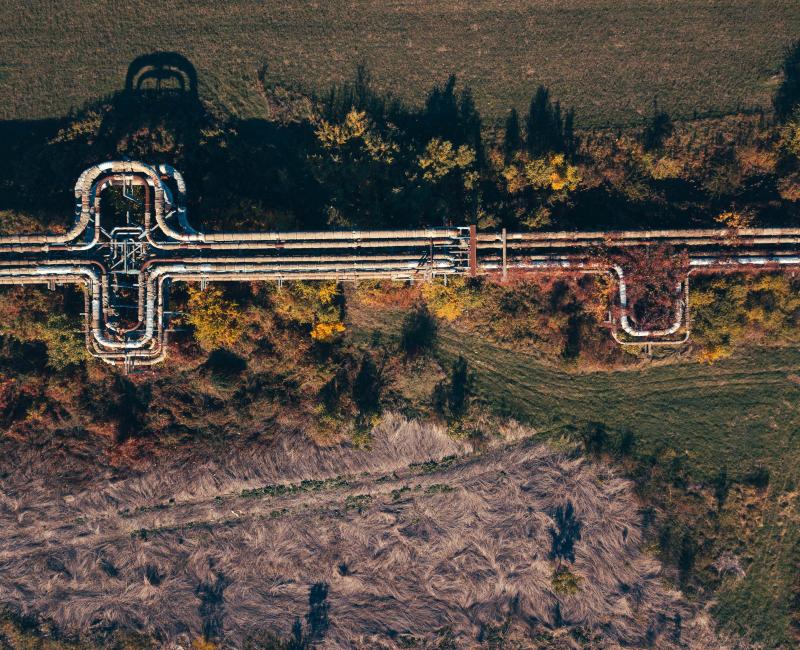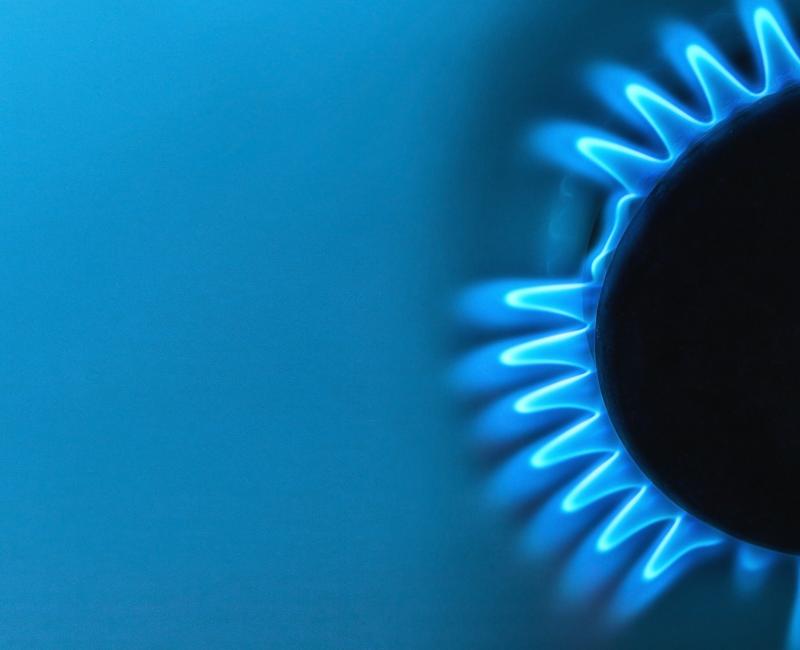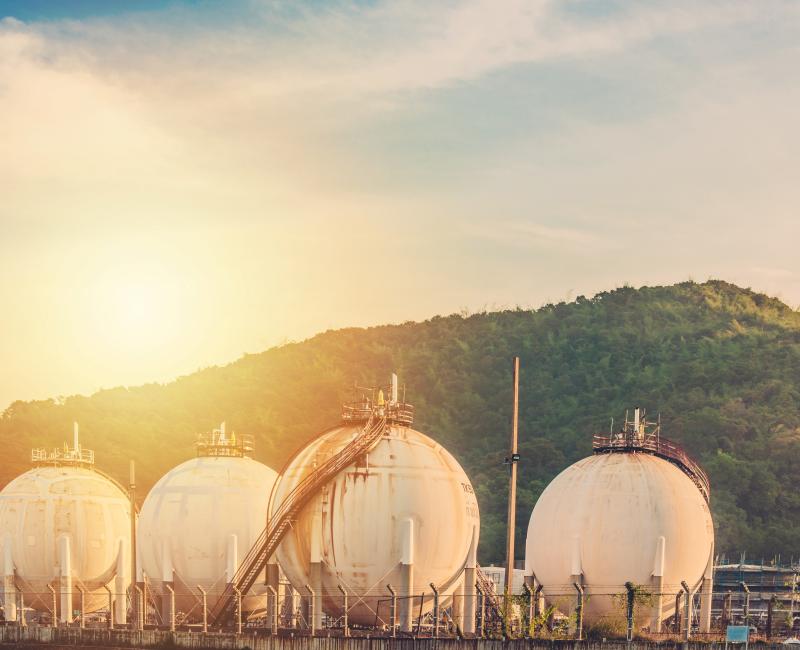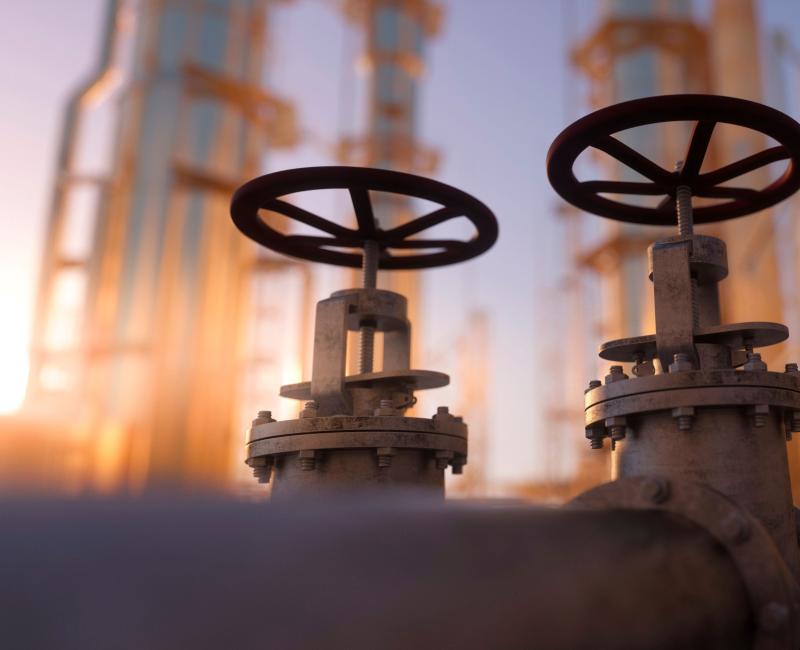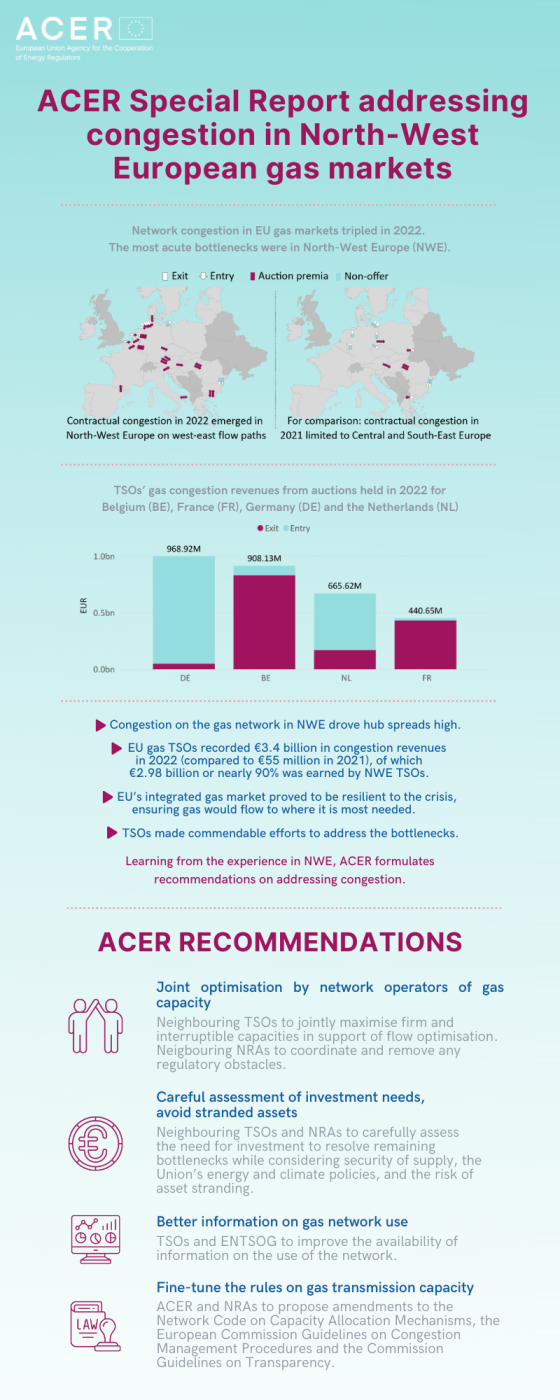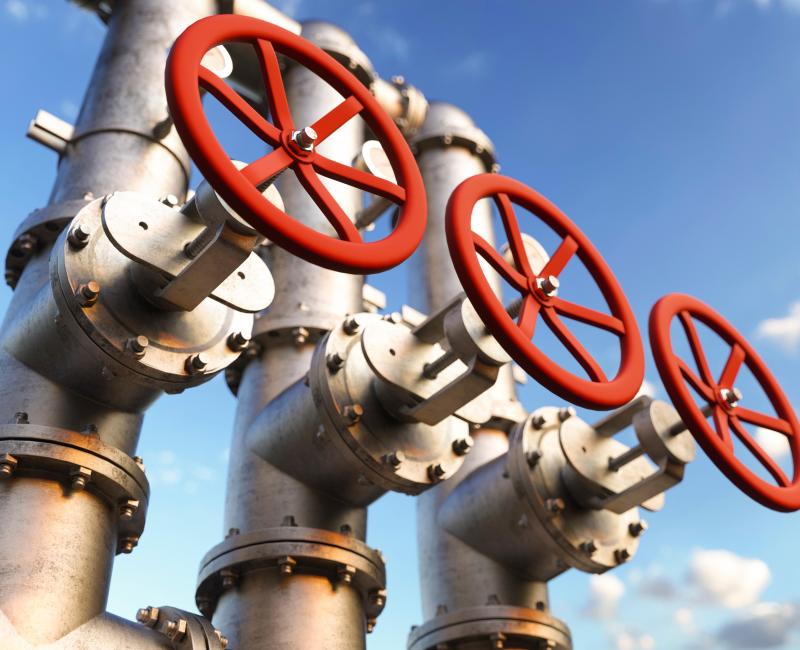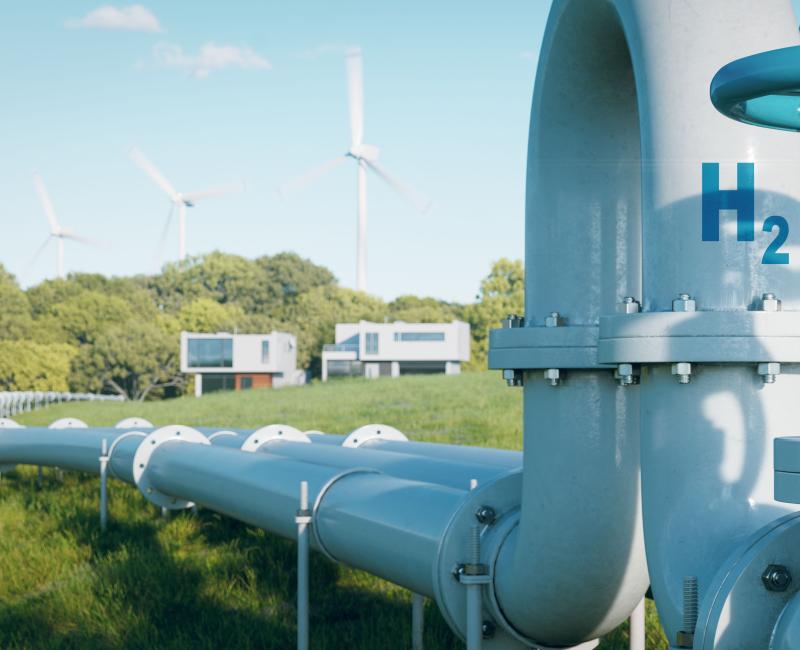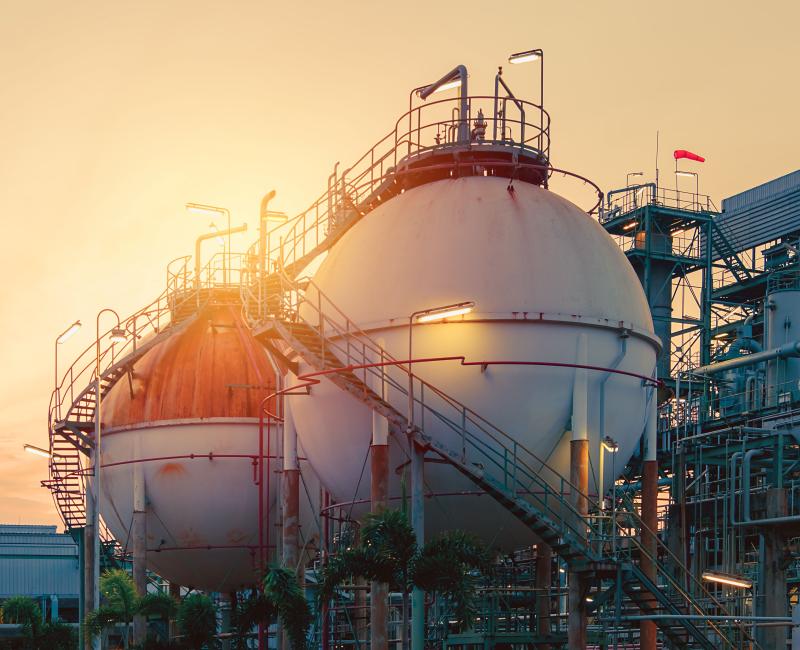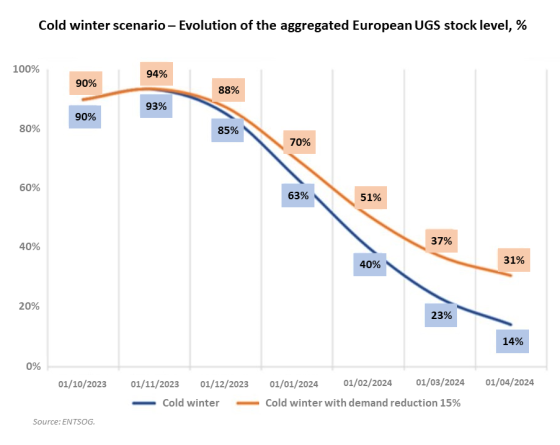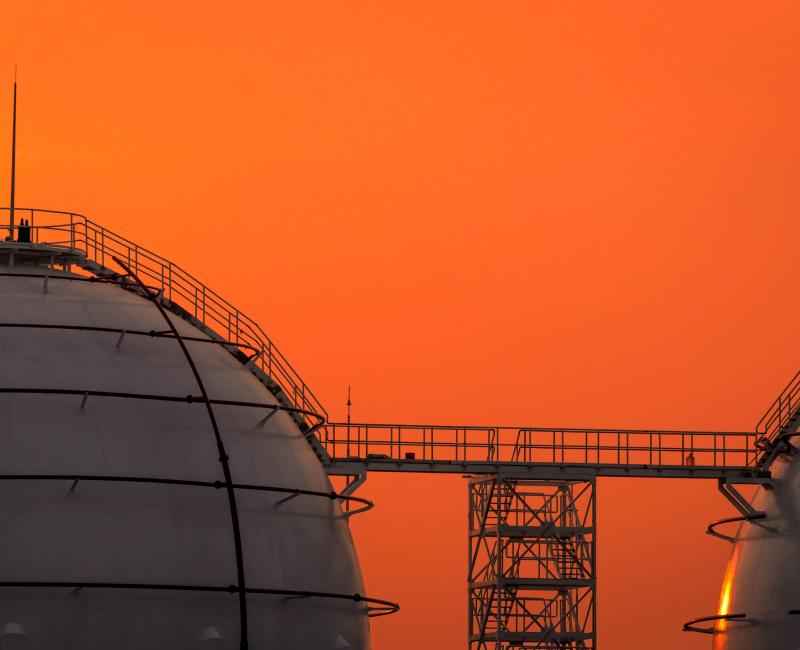ACER welcomes ENTSOG’s gas Winter Supply Outlook and recommends improvements
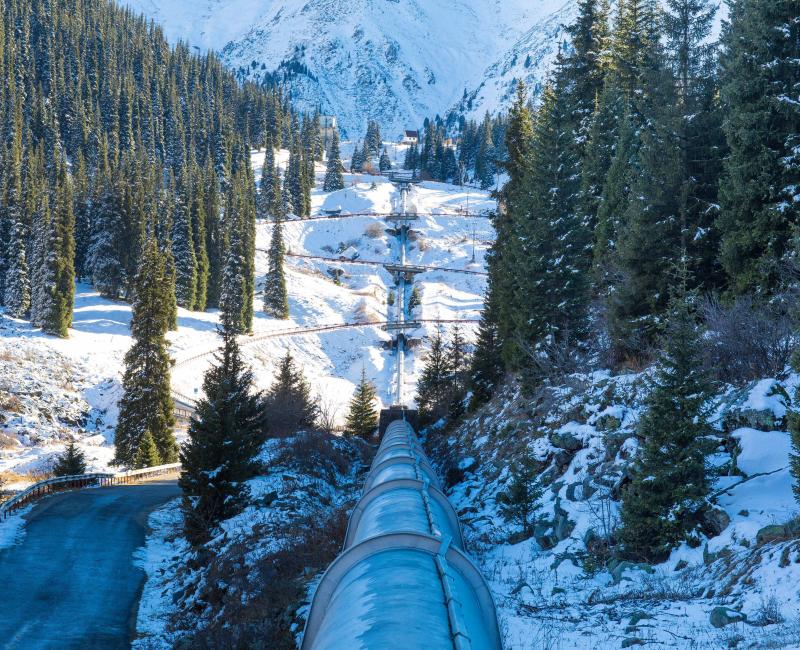
ACER welcomes ENTSOG’s gas Winter Supply Outlook and recommends improvements
What is it about?
ACER publishes today its Opinion on the Winter Supply Outlook for 2023-2024 of the European Network of Transmission System Operators for Gas (ENTSOG).
ENTSOG's Outlook evaluates the European gas network's readiness to meet supply and demand requirements for the upcoming winter. It also provides an overview of summer 2024.
ENTSOG’s key findings
-
Cooperation is key: the EU gas infrastructures is adequate to meet winter gas demand and the storage filling targets, if Member States cooperate and sufficient gas supply is ensured.
-
Storage fillings levels: storage filling levels already reached the 90% target in August 2023, showing that the measures implemented in the Members States were effective.
-
If specific circumstances of high demand materialise, Europe would still risk to face demand curtailment and low level of gas in stock at the end of the winter.
-
A minimum of 46% of working gas volume should be retained at the end of winter, to meet the summer demand and achieve the 90% targets by 1 November 2024.
-
Early and significant withdrawal of gas from storages will negatively affect the flexibility of the gas system and the security of supply for winter 2024–25.
-
The prolonged unavailability of the Balticconector (connecting the Estonian and Finnish gas grids) does not pose a significant risk to the security of gas supply in the region.
What are ACER’s conclusions?
-
Timely publication: ACER welcomes the timely publication of the Winter Supply Outlook 2023–24.
-
Scope of the analysis: ACER appreciates that the analysis carried out by ENTSOG includes different scenarios, including a full disruption of Russian gas supply and different availabilities of LNG imports and storage filling levels. It also welcomes that the Outlook extends its analysis by also assessing the level of preparedness for winter 2024-25.
-
Risks and supply disruptions: as the risk for a potential full disruption of the Russian gas supplies persists, an effective monitoring of European gas supplies and storage filling trajectories is key.
-
Maximisation of cross-border and import capacities: recently commissioned infrastructure has added significant cross-border and import capacities. ACER invites the Transmission System Operators (TSOs) involved to coordinate, maximise their capacities and jointly manage contractual and physical congestions.
-
ENTSOG’s Outlook methodology: ACER finds that improvements are needed:
-
In the definition of demand and supply projections.
-
To improve transparency by publishing the assumptions underlying the different demand and supply scenarios.
-
To engage with stakeholders before drafting the Outlooks and to consult on the methodology proposed.
-
-
Cooperation between ENTSOG and ENTSO-E: ACER invites the ENTSOs to cooperate in ensuring consistent assumptions in their seasonal outlooks and to align the timing of their publication.
Read ACER’s Opinion and access ACER's other ENTSOG Outlook Opinions.
